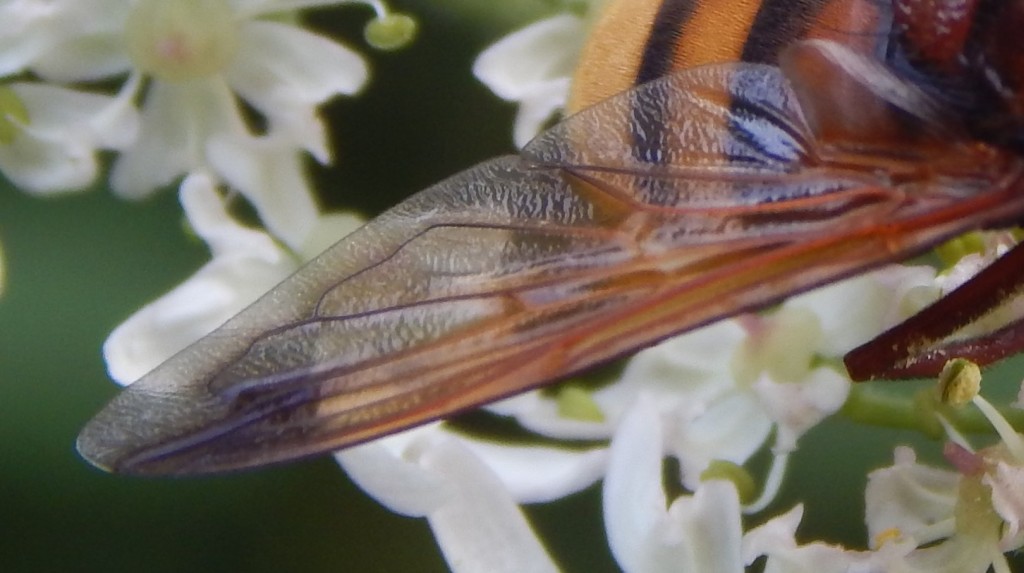
[361] Volucella zonaria, Hornet Mimic Hoverfly
Vollucella pellucens, Pellucid Fly
Introduction
Vollucella Zonaria, the Hornet Mimic Hoverfly, is our largest commonly occurring Hoverfly, frequently reported by the public as a Hornet. Vollucella pellucens is another large Hoverfly, sometimes called the Pellucid Hoverfly or Pellucid Fly.
Taxonomy
Kingdom – Animals
Phylum – Arthropods
Class – Insects
Order -Diptera (Flies)
Family – Syrphidae (Hoverflies)
Genus – Volucella
Scientific Names – Volucella zonaria, Volucella pellucens
Names
I can’t trace volucella. Zonaria means relating to a belt. Pellucent means transparent.
Volucella zonaria
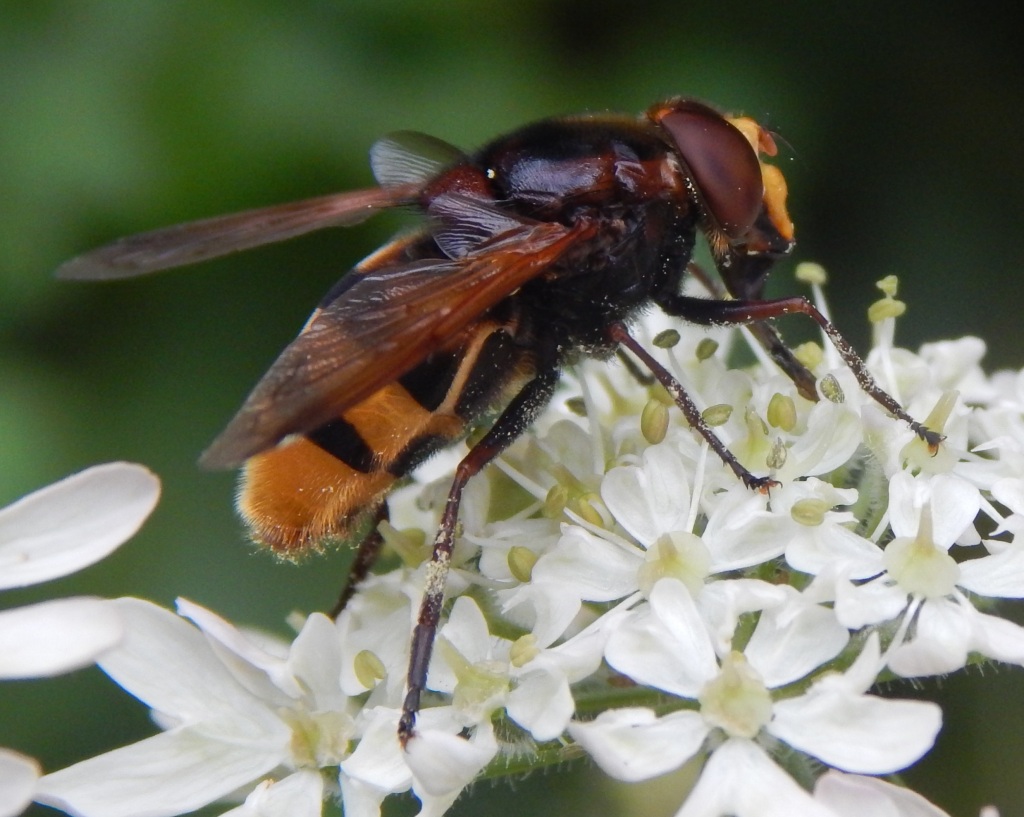

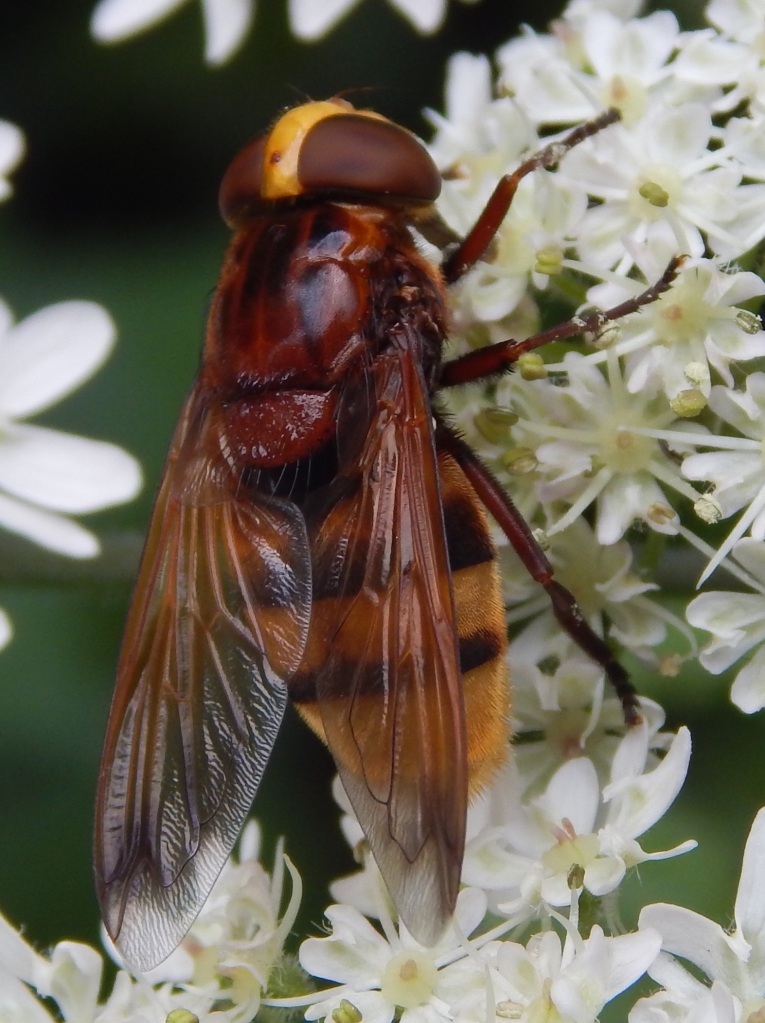
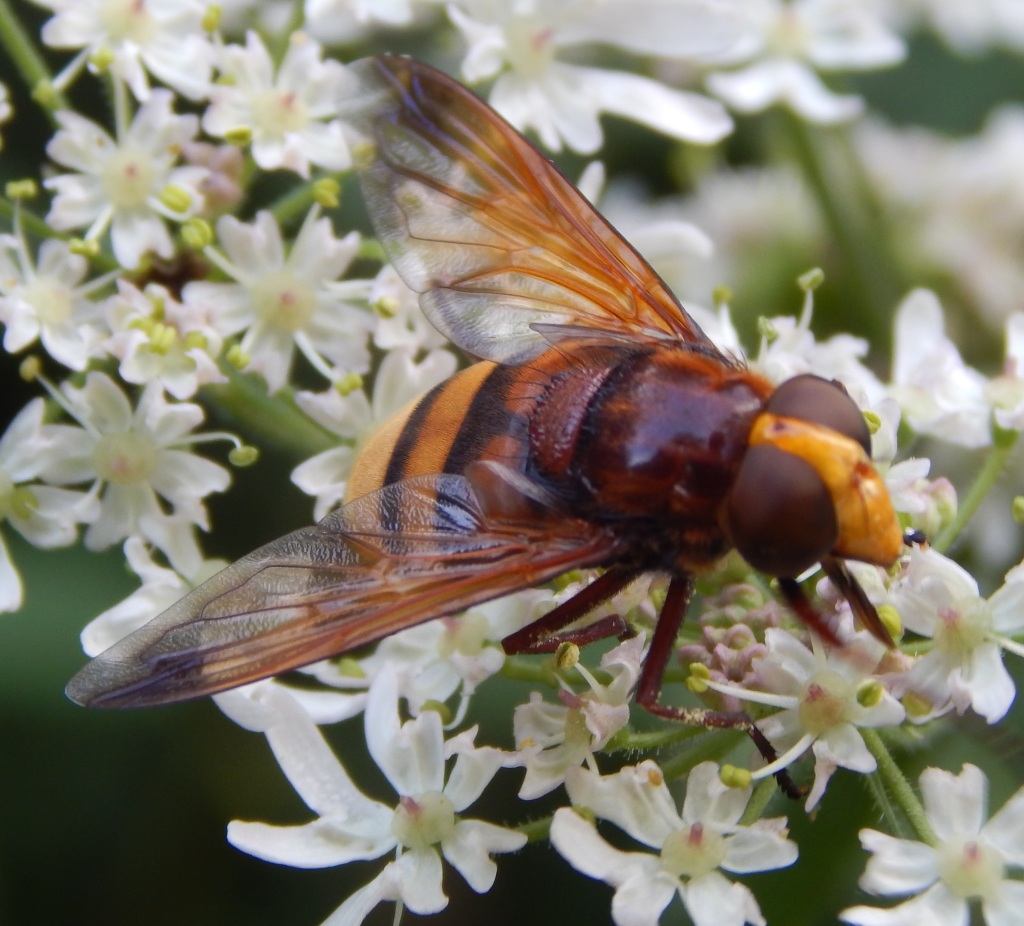
This is the largest of the UK hoverflies. It is found in most of Europe but only spread to the UK around 1950. It is now widespread across the South of England and spreading northwards slowly.
I won’t describe it in detail as you can see it from my pictures above.
It is often seen by the public as a Hornet but, to be honest it looks nothing like a Hornet. The shape is much fatter, the colouring bears little resemblance, except for having yellow stripes, and the head and eyes are very different. Perhaps in flight it could be superficially similar. But it has probably evolved to mimic other species as a protection against being eaten, because wasps and hornets have a sting that makes them unpleasant to eat.
If you have never seen a Hornet, think of it as a slightly larger version of a [357] Wasp, which is exactly what it is.
Adult Volucella zonaria feed on nectar. They lay their eggs in the nests of wasps and hornets. Larvae live commensally in the nests, pupate over winter in the soil and emerge in spring.
Volucella pellucens
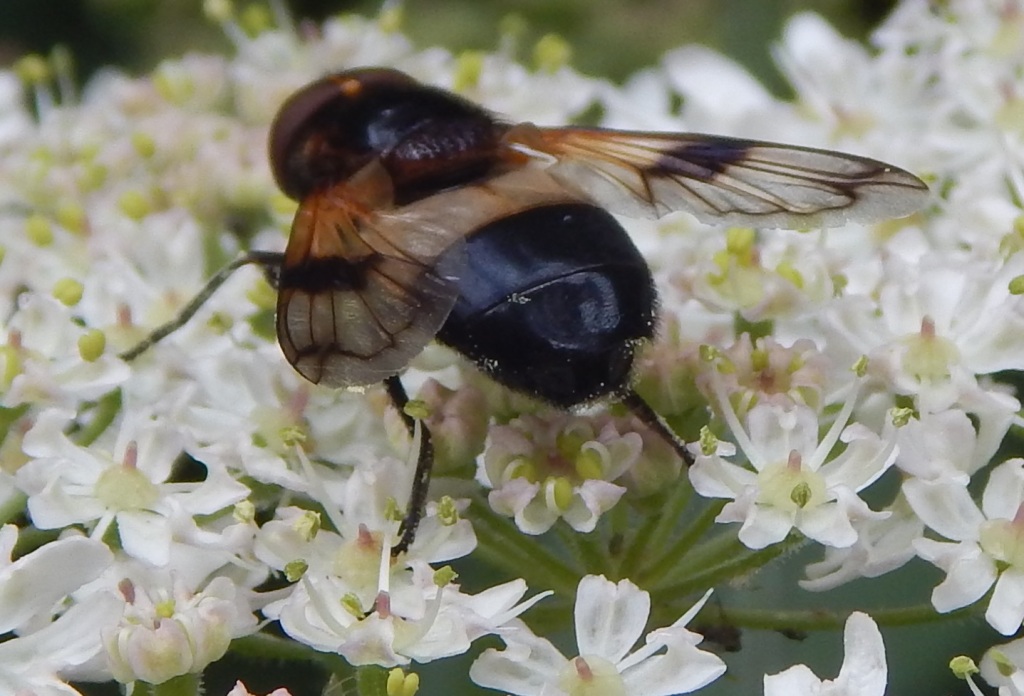

This hoverfly also seems to have evolved to look a bit like a wasp or bee, perhaps a [052] Bumblebee, but again the mimicry is only approximate. It is not really sensible to call this the pellucid fly (which it is sometimes called) because almost all flies have transparent wings.
Its lifecycle is similar to Volucella zonaria. The female is undisturbed as she enters the nest of common wasps to lay her eggs. Larvae scavenge at the bottom of the nest for food remains, dead wasp larvae and pupae and other insects. They leave the nest to pupate underground.
Other Notes
This is the last of our flies but not quite the last insect.
See also
Three other less common species of Volucella are seen in Britain.
- Volucella bombylans mimics a typical Bumblebee. (Bombylans, of course, relates to the Bumblebee.)
- Volucella inanis mimics typical Wasps. (The Latin inanis means empty, vain or worthless.)
- Volucella inflata is somewhat like Volucella pellucens with orange markings.
